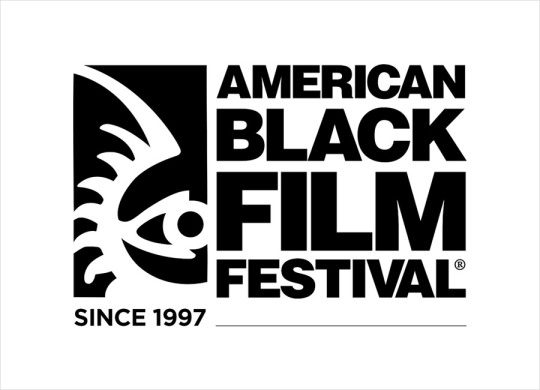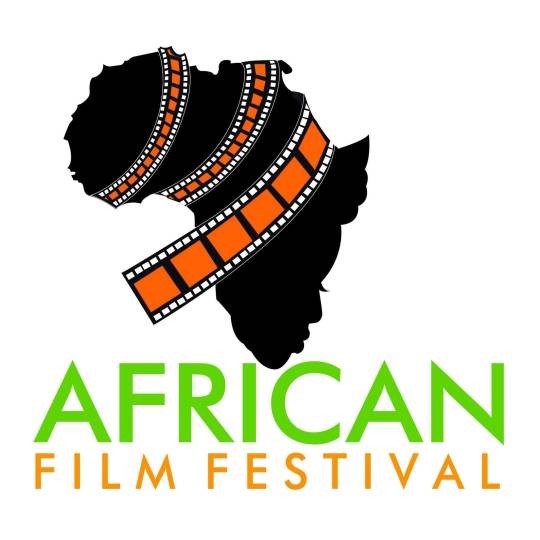#african american film festival
Photo
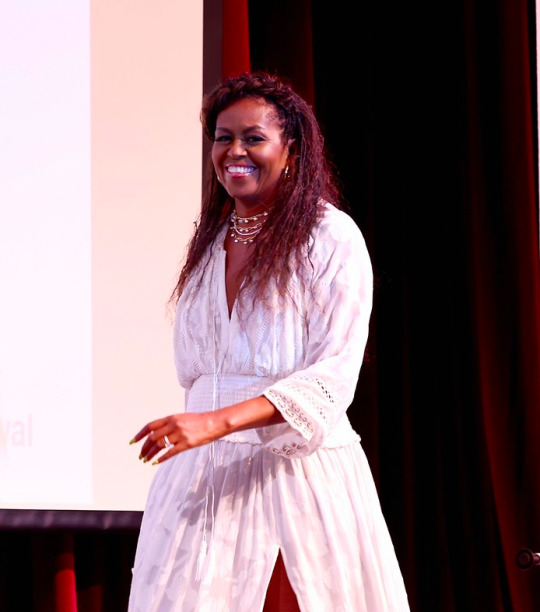
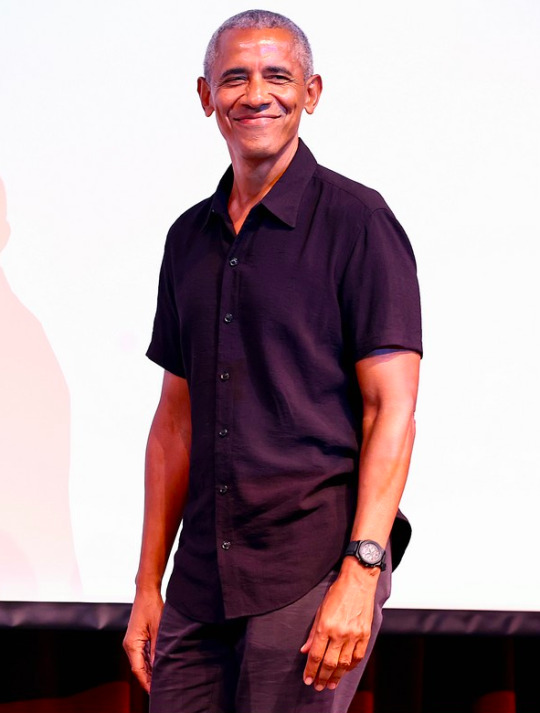


Barack & Michelle Obama making a surprise appearance at Martha's Vineyard African American Film Festival 2022 to support the Netflix documentary, “Descendant” (8/5/2022).
#the obamas#barack obama#michelle obama#barack x michelle#potus#flotus#black love#2022#netflix#aaff 2022#african american film festival#martha's vineyard#blakc film#black people#black culture#african american#descendant#documentary#braids#black couple#couple#they look GOOD#photos#sbrown82
194 notes
·
View notes
Text

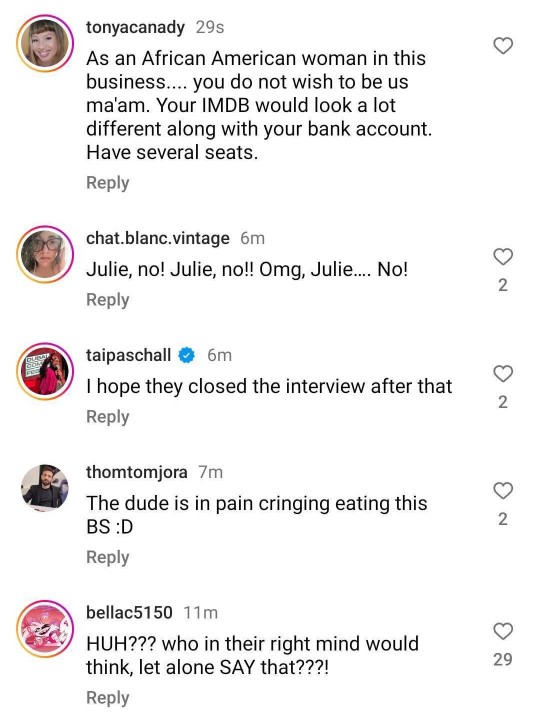

the idiocy is killing kieran lmaooo
#white people being white people#white french people being usual racist selves#kieran culkin#julie delpy#sundance film festival#wiener-dog#cringe#uncomfortable#african american#oscars#academy#diversity#inclusion#racial insensitivity#cultural awareness#social media backlash#entertainment industry#racial remarks#sensitivity training
13 notes
·
View notes
Link
Viola Davis is set to be honored with the Women In Motion Award at this year’s Cannes Film Festival.
6 notes
·
View notes
Text
Entertainment News Roundup: Hit reality TV shows display African glitz and glamour; Obi-Wan hides the Force in new 'Star Wars TV series, says Ewan McGregor and more
Entertainment News Roundup: Hit reality TV shows display African glitz and glamour; Obi-Wan hides the Force in new ‘Star Wars TV series, says Ewan McGregor and more
Following is a summary of current entertainment news briefs.
Hit reality TV shows display African glitz and glamour
Dripping with champagne, diamonds, and catty dialogue, two made-in-Africa reality TV series have transfixed viewers on the continent, showcasing ritzy lifestyles that are a far cry from stereotypical images of African hardship. On Netflix’s “Young, Famous & African”, a group of…

View On WordPress
#Africa#African#american#Cannes Film#Ewan McGregor#Featured#Kirill Serebrennikov#McGregor#Netflix#Obi-Wan Kenobi#Reagan#star wars#the festival#Ukraine#ukrainian#young
3 notes
·
View notes
Text

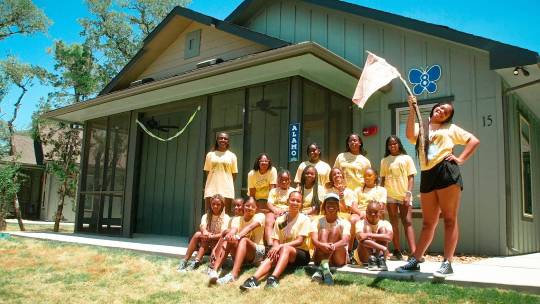
Presented by The Queen Collective, Flavor Unit, P&G, Tribeca Studios & BET; I'm proud to announce 'Founder Girls' a heartwarming short film! I composed & produced the entire original score for this film! Now Free to stream at BET.com - Click here or the top photo to watch now!
#music#producer#queen latifah#queen collective#score#original score#short film#film#movie#camp#music production#Fun#Happy#Free#Summer Camp#Texas#African American#History#tribeca film festival#BET#Contessa Gayles#RamJet Lombardi#tribeca#Composer#Funny#Charming#Heartwarming#Pool#Horse#Black
0 notes
Photo


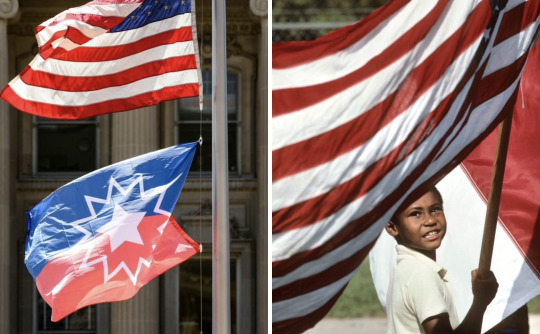


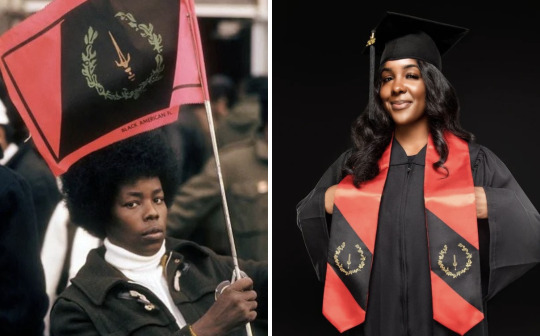
Juneteenth is a Black American holiday.
We call Juneteenth many things: Black Independence Day, Freedom Day, Emancipation Day, Jubilee Day. We celebrate and honor our ancestors.
December 31 is recognized as Watch Night or Freedom’s Eve in Black American churches because it marks the day our enslaved ancestors were awaiting news of their freedom going into 1863. On January 1, 1863, President Lincoln issued the Emancipation Proclamation. But all of the ancestors wouldn’t be freed until June 19, 1865 for those in Galveston, Texas and even January 23, 1866 for those in New Jersey (the last slave state). (It’s also worth noting that our people under the Choctaw and Chickasaw Nations wouldn’t be freed until April 28, 1866 and June 14, 1866 for those under the Cherokee Nation by way of the Treaties.)
Since 1866, Black Americans in Texas have been commemorating the emancipation of our people by way of reading the Emancipation Proclamation and coming together to have parades, free festivities, and later on pageants. Thereafter, it spread to select states as an annual day of commemoration of our people in our homeland.
Here’s a short silent video filmed during the 1925 Juneteenth celebration in Beaumont, Texas:
youtube
(It’s also worth noting that the Mascogos tribe in Coahuila, Mexico celebrate Juneteenth over there as well. Quick history lesson: A total of 305,326 Africans were shipped to the US to be enslaved alongside of American Indians who were already or would become enslaved as prisoners of war, as well as those who stayed behind refusing to leave and walk the Trail of Tears to Oklahoma. In the United States, you were either enslaved under the English territories, the Dutch, the French, the Spanish, or under the Nations of what would called the Five “Civilized” Native American Tribes: Cherokee, Creek (Muscogee), Chickasaw, Choctaw, and Seminoles. Mascogos descend from the Seminoles who escaped slavery during the Seminole Wars, or the Gullah Wars that lasted for more than 100 years if you will, and then settled at El Nacimiento in 1852.)
We largely wave our red, white and blue flags on Juneteenth. These are the only colors that represent Juneteenth. But sometimes you may see others wave our Black American Heritage flag (red, black, and gold).
Juneteenth is a day of respect. It has nothing to do with Africa, diversity, inclusion, immigration, your Pan-African flag, your cashapps, nor your commerce businesses. It is not a day of “what about” isms. It is not a day to tap into your inner colonizer and attempt to wipe out our existence. That is ethnocide and anti-Black American. If you can’t attend a Black American (centered) event that’s filled with education on the day, our music, our food and other centered activities because it’s not centered around yours…that is a you problem. Respect our day for what and whom it stands for in our homeland.
Juneteenth flag creator: “Boston Ben” Haith
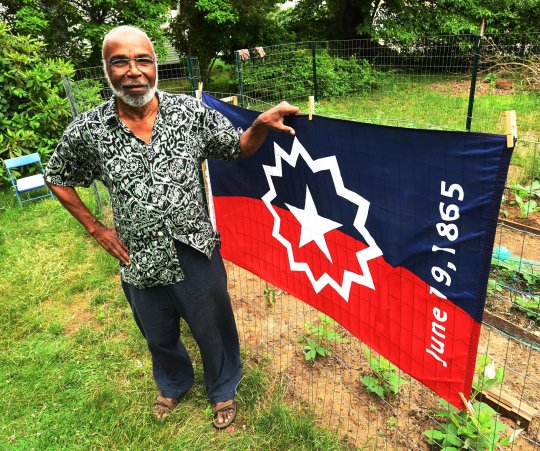
It was created in 1997. The red, white and blue colors represent the American flag. The five-point star represents the Lone State (Texas). The white burst around the star represents a nova, the beginning of a new star. The new beginning for Black Americans.
Black American Heritage Flag creators: Melvin Charles & Gleason T. Jackson

It was created in 1967, our Civil Rights era. The color black represents the ethnic pride for who we are. Red represents the blood shed for freedom, equality, justice and human dignity. Gold fig wreath represents intellect, prosperity, and peace. The sword represents the strength and authority exhibited by a Black culture that made many contributions to the world in mathematics, art, medicine, and physical science, heralding the contributions that Black Americans would make in these and other fields.

SN: While we’re talking about flags, I should note that Grace Wisher, a 13-year-old free Black girl from Baltimore helped stitched the Star Spangled flag, which would inspire the national anthem during her six years of service to Mary Pickersgill. I ain’t even gon hold you. I never looked too far into it, but she prob sewed that whole American flag her damn self. They love lying about history here until you start unearthing them old documents.
In conclusion, Juneteenth is a Black American holiday. Respect us and our ancestors.
#juneteenth#juneteenth flag#black american history#black american culture#ben haith#black american heritage flag#melvin charles#gleason t jackson#grace wisher#american flag#mascogos#juneteenth 2023
1K notes
·
View notes
Text
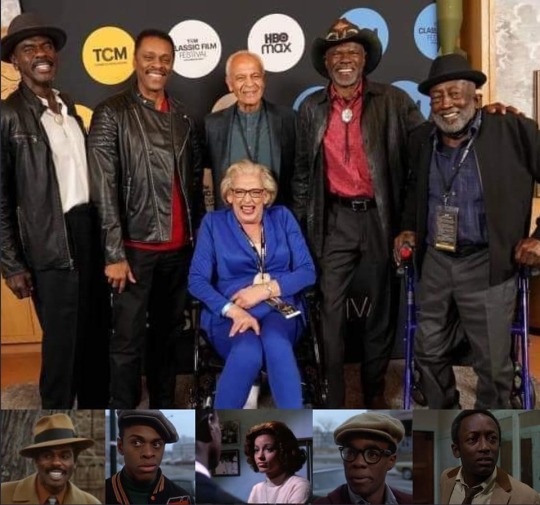
A 'COOLEY HIGH' REUNION
AT THE 2022 TCM CLASSIC FILM FESTIVAL IN LOS ANGELES, CA
Steven Williams (73), Lawrence Hilton-Jacobs (68), director Michael Schultz (83; middle back row), Cynthia Davis (63), Glynn Turman (75), and Garrett Morris (85) attend the screening of "Cooley High".
One of the most influential African American films of the 1970s, this coming-of-age tale was inspired by writer Eric Monte’s experience growing up in Chicago’s Cabrini-Green housing project, where he attended the real Cooley Vocational High School. Indie studio American International Pictures developed his story and had the wisdom to hire a Black director, Michael Schultz, to shoot the low-budget film on location. Glynn Turman stars as Preach, who dreams of writing plays while palling around with basketball champ Cochise (Lawrence Hilton-Jacobs). Their episodic adventures and a soundtrack filled with Motown classics helped turn the picture into one of the year’s biggest hits.
It had a major influence on writer-director-actor Robert Townsend—who had a one-line bit—and John Singleton, among other Black filmmakers who saw its use of three-dimensional characters and focus on friendship as a breakthrough. It also inspired the hit TV series What’s Happening!!
124 notes
·
View notes
Note
I hate it when I can't use a term that fits me very well because my brain (which processes everything with images) has an image of that term that doesn't look like me.
Like when I think of "transmasc" and all that pops into my head are skinny, white, American boys with very basic styles (which isn't a bad thing, it's just "too basic" for me personally), and of course, who look like cis boys and hate their bodies or prefer other body.
Meanwhile, I'm a POC, fat, Latine person, with questionable style (/joke), who CERTAINLY doesn't look like a cis boy and who really loves their body.
How could I use a term when my brain tells me that term doesn't fit people like me? I hate that. It's just me?
hey anon. i so wish I could reach through this screen and tell you that who you are is perfect and that you have every right to terminology that feels right, but as a fat trans person myself I know it takes more than kind words to deal with a pain like this, and one that’s even more intersectional than mine with your race and culture in the picture.
but that image you have in your head of what transmasc means, that is not the reality. that is what a small part of the community, of the world, WANTS you to think because they would rather throw other members of their community under the bus to gain faux acceptance for themselves, which is NOT your fault, but it’s also not everyone, there are so many people in this community who look like you or who truly stand with you. Transmasculine history is and never has been white or thin or any of that.
I’m going to link a few things you may want to look into if you’re wanting to start accepting your identity a little more, or just to see that you really ARENT alone. trans men/transmascs of color have been part of our history since the beginning. some of these things im sharing may be somewhat nsfw and have the word 'tranny' in them, just as a warning if that stuff bothers you.
newspaper clipping showing three trans men of color at a festival for a film they were part of, the first ever sexual/porn film by and for trans men of color
some pictures showing some fat trans men and trans men of color at marches are here
Bobby Cheung, the Asian and Pacific Islander trans man who won the Mr. Transgender San Francisco Pageant in 2004
trans men of color discuss intersectionality in a film they directed called "Trappings Of Transhood"
a photo showing the attendees of an FTM conference- you can see many non-white people in attendance
a photo of a group of Latino trans men who attended Tranny Fest in 1999
basic info on victor j mukasa, a Black transmasc lesbian active in East African LGBTQ rights scene
an older fat trans gentleman's photo and experience
a post on pauli murray (please look them up. his experience is much more nuanced than this post gives them credit for, and she was a wonderful intersectional activist)
various trans men (many fat and of color) who have contributed to our history
a conference of Indian trans men
the story of a trans man named Ben
one of my personal favorite transmasc historical figures, Amelio Robles Ávila
Zander Keig, the fat Latino trans man who won social worker of the year in 2020
a wonderful read on the intersectionality of transmasculinity and race
a digital archive of trans and queer Latino history
the Instagram page of a popular Black drag king
an article with interviews with various drag kings, including several of color
Florence Hines, the Black drag king once called the most excellent male impersonator in America
more drag kings many of color!
Drag Kings: An Archaeology of Spectacular Masculinities in Latino America
anon, it is so easy to feel like you are alone when your own history has been unfairly erased from you. but when I say “you are not alone”, I am not offering empty words of comfort- YOU ARE NOT ALONE. Transmasc and similar identity has truly NEVER actually been just for white people or thin people. You are WONDERFUL, and you are ABSOLUTELY a part of trans masculinity and transmasculine history is YOUR history and community as much as it is mine and others. You belong.
317 notes
·
View notes
Note
This… out of curiosity
Do you know the different meanings of the name of Cinderella's Stepsisters?
Charles Perrault's Cendrillon
Javotte: A nickname for Geneviève, which means "of the race of woman," "woman of the family," or "white wave."
(Perrault only reveals the older stepsister's name in one scene, not the younger one's.)
Rossini's opera La Cenerentola
Clorinda: “Youthful” or “greenery.”
Tisbe: Unknown; it’s a name from Greek mythology.
Massenet's opera Cendrillon
Noémie: “Pleasantness.”
Dorothée: “Gift from God.”
The 1947 Russian film
Anna: “Grace” or “favor.”
Marianna: A cross between Mary, meaning “bitter,” “drop of the sea,” or “beloved,” and Anna (see above).
The Let's Pretend radio adaptation
Flora: “Flower.”
Isabella: A form of Elizabeth, meaning “My God is an oath.”
The Disney version, animated and live action
Anastasia: “Resurrection.”
Drizella: Probably a variant of Drusilla, meaning “little strong one.”
The 1955 film The Glass Slipper
Birdena: “Little bird.”
Serafina: “Fiery one.”
The 1957 version of Rodgers and Hammerstein's musical
Portia: “Pig.”
Joy: Self-evident.
The 1965 version of Rodgers and Hammerstein's musical
Prunella: “Little plum.”
Esmeralda: “Emerald.”
The Muppets' Hey, Cinderella!
Mona: “My lady.”
Lisa: Derived from Elizabeth, meaning “my God is an oath.”
Rankin/Bass's Festival of Family Classics
Fatima: “To abstain” (though it serves as a play on “fat,” because she is fat)
Leania: Probably derived from Helen, meaning “light” (though it serves as a play on “lean” because she’s scrawny)
The 1969 Czech film
Katerina: “Far off” or “pure.”
Dorota: "Gift from God."
The 1973 Czech film Three Wishes for Cinderella
Dora: “Gift.”
The 1976 film The Slipper and the Rose
Isobella: “My God is an oath” (see above).
Palatine: “Of the palace.”
The 1978 African-American adaptation Cindy
Olive: "Olive," of course.
Venus: "Love."
The Faerie Tale Theatre adaptation
Arlene: “Honor” or “eagle.”
Bertha: “Bright.”
The Grimm's Faerie Tale Classics adaptation (English dub)
Phoebe: “Bright.”
Griselda: “Gray battle.”
Stephen Sondheim's musical Into the Woods
Florinda: "Flower."
Lucinda: "Light."
The Happily Ever After: Fairy Tales for Every Child adaptation
Margarita: “Pearl” or “daisy flower.”
Esmeralda: “Emerald” (see above).
The musical A Tale of Cinderella
Moltovoce: “Much voice.”
Seppia: “Squid.”
The 1996 Burbank Animation version
Nellie: A nickname for Ellen or Helen, meaning “torch” or “light.”
Melba: Derived from Melbourne, Australia. Melbourne means “mill stream.”
(Their names are inspired by the famous Australian opera singer Nellie Melba, whose birth name was Helen Mitchell and who took her stage name from her home city of Melbourne.)
The anime series Cinderella Monogatari
Catherine: “Far off” or “pure.”
Jeanne: “God is gracious.”
The 1997 version of the Rodgers and Hammerstein musical
Minerva: “Intellect.”
Calliope: “Beautiful voice.”
The 1998 film Ever After: A Cinderella Story
Marguerite: “Pearl” or “daisy flower.”
Jacqueline: “Heel-grabber” or “supplanter."
Gregory Maguire's novel Confession of an Ugly Stepsister
Iris: "Rainbow" or "iris flower."
Ruth: "Friend."
Margaret Peterson Haddix's novel Just Ella
Griselda: "Gray battle" (see above).
Corimunde: Possibly a variant of "Clarimond," meaning "shining defender."
The Shrek franchise
Doris: "Dorian woman."
Mabel: "Lovable."
The 2000 stage version of the Rodgers and Hammerstein's musical
Grace: Self-evident.
Joy: Self-evident (see above).
The 2000 British TV film
Goneril: Unknown meaning.
Regan: "Little ruler" or "king's child."
(In case anyone didn't know it, their names are taken from the evil sisters in Shakespeare's King Lear.)
The Simsala Grimm adaptation
Agatha: “Good.”
Beatrice: "One who blesses.”
The novel and film Ella Enchanted
Hattie: A nickname for Harriet, meaning “home ruler.”
Olive: Self-evident (see above).
The 2004 film A Cinderella Story
Brianna: "High" or "noble."
Gabriella: "God is my strength."
Malinda Lo's novel Ash
Ana: "Grace" or "favor" (see above).
Clara: "Clear" or "bright.
The 2010 Märchenperlen adaptation
Clothilde: “Glorious battle.”
The 2011 Sechs auf einen Streich adaptation
Annabella: "Grace and beauty."
The 2013 stage version of the Rodgers and Hammerstein musical
Gabrielle: “God is my strength” (see above).
Charlotte: “Free woman.”
Alma Deutscher's opera
Griselda: “Gray battle” (see above).
Zibaldona: Possibly derived from Zebada, which is derived from Zebadiah, meaning “God has bestowed.”
Betsy Cornwell's novel Mechanica
Piety: Self-evident.
Chastity: Self-evident.
Andrew Lloyd Webber's musical Bad Cinderella
Adéle: “Noble.”
Marie: “Bitter,” “drop of the sea,” or “beloved.”
The 2021 Sony/Amazon film
Narissa: “Sea nymph.”
Malvolia: “Ill will.”
23 notes
·
View notes
Photo
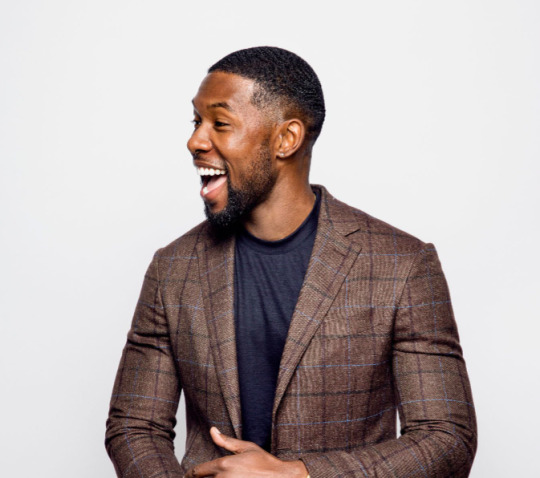

Trevante Rhodes at the Toronto International Film Festival for Los Angeles Times (2016).
#trevante rhodes#actor#black actor#moonlight#film#2016#toronto international film festival#hollywood#la times#portraits#celebrity#handsome#bae#african american#african american men#black culture#black man#black men#black film#dark skinned#photos#sbrown82
521 notes
·
View notes
Text

For Ytasha Womack, the Afrofuture Is Now
The writer and filmmaker discusses the blend of theoretical cosmology and Black culture in Chicago’s newest planetarium show.
Ytasha Womack, a screenwriter on “Niyah and the Multiverse,” currently playing at the Adler Planetarium in Chicago, is the author of numerous works including “Black Panther: A Cultural Exploration."
By Katrina Miller, New York Times, March 16, 2024.
On Feb. 17, the Adler Planetarium in Chicago unveiled a new sky show called “Niyah and the Multiverse,” a blend of theoretical cosmology, Black culture and imagination. And as with many things Afrofuturistic, Ytasha Womack’s fingerprints are all over it.
Ms. Womack, who writes both about the genre and from within it, has curated Afrofuturism events across the country — including Carnegie Hall’s citywide festival — and her work is currently featured in the Smithsonian’s National Museum of African American History and Culture. Afrofuturism is perhaps most popularly on display in the “Black Panther” films, which immerse viewers in an alternate reality of diverse, technologically advanced African tribes untouched by the forces of colonialism. (In 2023, Ms. Womack published “Black Panther: A Cultural Exploration,” Marvel’s reference book examining the films’ influences.)
But examples of the genre include the science fiction writer Octavia Butler, the Star Trek character Nyota Uhura and the cyborgian songs of Janelle Monáe. Some even envision the immortality of Henrietta Lacks, a Black woman whose cells were taken without consent for what became revolutionary breakthroughs in medicine, as an Afrofuturist parable.
Ms. Womack was one of the scriptwriters for “Niyah and the Multiverse.” She spoke with The New York Times about what Afrofuturism means to her, the process of weaving the genre’s themes with core concepts in physics and how the show aims to inspire. This conversation has been condensed and edited for clarity.
How do you define Afrofuturism?
Afrofuturism is a way of thinking about the future, with alternate realities based on perspectives of the African diaspora. It integrates imagination, liberation, technology and mysticism.
Imagination is important because it is liberating. People have used imagination to transform their circumstances, to move from one reality to another. They’ve used it as a way to escape. When you are in challenging environments, you’re not socialized to imagine. And so to claim your imagination — to embrace it — can be a way of elevating your consciousness.
What makes Afrofuturism different from other futuristic takes is that it has a nonlinear perspective of time. So the future, past and present can very much be one. And that’s a concept expressed in quantum physics, when you think about these other kinds of realities.
Those alternate realities could be philosophical cosmologies, or they could be scientifically explained worlds. How we explain them runs the gamut, depending on what your basis for knowledge is.
Which Afrofuturist works have influenced you?
I think about Parliament-Funkadelic, a popular music collective of the 1970s. As a kid, their album covers were in my basement. A lot of artists during that era — Herbie Hancock, Miles Davis, Earth, Wind & Fire, Labelle — had these very epic, Afrofuturistic album covers, but Parliament-Funkadelic sticks out. There’s one depicting Star Child, the alter ego of George Clinton, the lead musical artist, emerging from a spaceship. That sort of space-tastic imagery was abounding for me as a kid.
“The Wiz,” a reimagining of “The Wizard of Oz,” was on all the time in my house growing up. It had this fabulosity to it — a heightened dream world that reflected 1970s New York. You had the Twin Towers in Emerald City, the empty lots Dorothy walked through with all the trash, the Wicked Witch running a fashion sweatshop, representing the garment district. The film took an urban landscape and made it fabulous, tying in this theme of Dorothy coming into her own through her journey.
Those are images that had a very strong impact on me. As I matured, I got into house music and dance, and began to see relationships between rhythm, movement, space and time. It’s not always something I can give language to, but it’s certainly become a basis for how I talk about metaphysics, in a physical kind of way.
What inspired your team to create “Niyah and the Multiverse”?
We wanted to tell a story about a young girl named Niyah, who wants to be a scientist and who is figuring out who she is — not just on Earth, but also in the universe.
Niyah looks for insight from her grandparents, who explain some of the symbolism of the African artwork in her home. She thinks about concepts she has learned from her science teacher. And she even meets her future self, who is a theoretical astrophysicist. Together, the two explore some of the more popular multiverse theories that scientists are looking at today.
Which theories are those?
Niyah learns about the many-worlds theory, which is this idea that all of your choices evolve into different universes. The choices you make create new paths, essentially creating multiple existences of yourself.
She learns about bubble theory, which says that after our Big Bang, more universes sort of bubbled off, each with their own laws of physics. Niyah also explores the idea of shadow matter, in which particles get reassembled as similar entities in mirror universes.
So there’s this parallel between Niyah learning about the multiverse and also exploring her own identity through her ancestral heritage.
Right. Because both of these are paths of meaning, different ways of understanding who we are. Afrofuturists tend to think in a way that is accepting of a lot of different realities anyway, so it was a pretty seamless experience to weave the physics and other aspects of the genre together. There’s already this intergenerational, or interdimensional, element to the conversation and the art that comes out of it.
The show is presented in the planetarium dome, which has a 360-degree screen, so it’s very immersive. Stepping into the space and watching the show feels like an interdimensional experience of its own.
The first audience to see it had a very emotional response. Some people were crying. There were Black women in the audience saying they always wanted to see this kind of imagery, that they had wanted to be scientists at one point in time. Others were deeply touched by the vibrancy of the show, of how it was able to bring these multiverse theories to life.
It’s impressive that these physics concepts, which can be difficult for people to understand or relate to, are made so accessible with examples that are not only imaginative but very rooted in Black culture.
Right. And it wasn’t difficult for us to do that, because as Afrofuturists, we operate in that space. It’s just about mirroring a way of being that we have always been immersed in.
I think “Niyah and the Multiverse” expresses that we all have different relationships to space and time. We are all looking to understand who we are, where we come from and where we can go in this broader space-time trajectory.
And maybe for some, the show normalizes the idea that there are kids who are Black who dream and are curious about the world. That curiosity can take them in the direction of becoming an artist, or becoming a scientist.
What challenges did you face in tackling the multiverse?
In trying to write some elements of the story, we had to push our own imagination to come up with what a universe might look like if you’re not using the laws of physics that exist in this one. Like, what does it mean to have your particles reassembled into something else? Sometimes we’d come up with ideas for different worlds, and our science consultants would say that already exists.
For me, this shows the beauty of bridging art and science. Artists can give visuals and narratives to ideas that scientists come up with. Or it could happen the other way around: Artists imagine something, and scientists think about what might be needed to support a universe that looks that way.
Image
13 notes
·
View notes
Photo



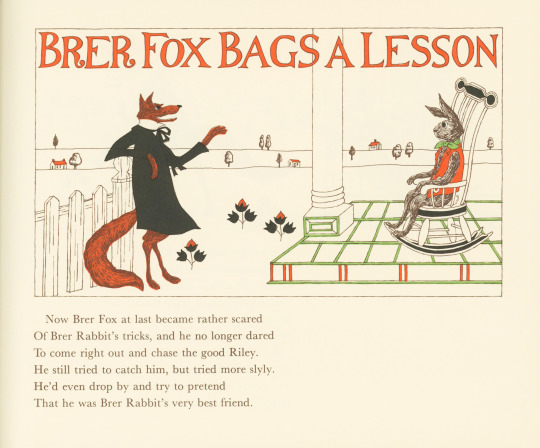

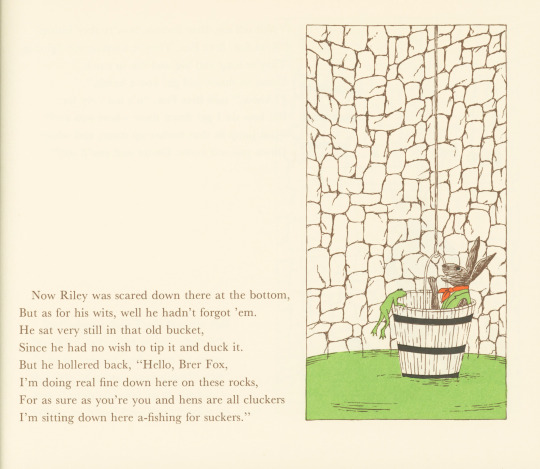

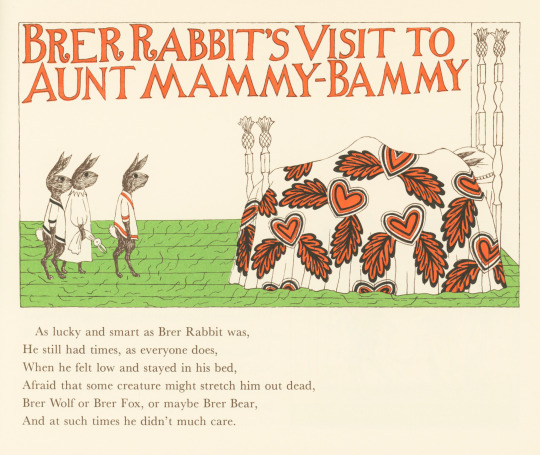
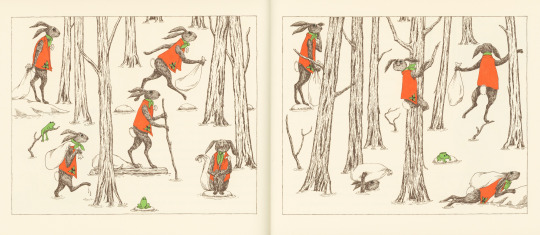

Lunar New Year 2023
Happy Lunar New Year to all who celebrate! Lunar New Year is celebrated in countries all over the world, though it is largely celebrated in Asia and is sometimes called Chinese New Year or Korean New Year or Vietnamese New Year, etc. depending on which country’s celebrations one is referring to. In Chinese, it is most often called the Spring Festival.
This lunar year is the year of the Rabbit (although in Vietnam is it the year of the Cat!), so we are sharing these stories of Brer Rabbit’s adventures as told by Ennis Rees and illustrated by Edward Gorey. More of Brer Rabbit’s Tricks was published in 1968 by Young Scott Books.
Brer Rabbit stories originate in the African diaspora and were told widely among enslaved people in the American South. The stories were then co-opted by white American authors, for example in the “Uncle Remus” tales written by Joel Chandler Harris and Disney’s film Song of the South. The stories in More of Brer Rabbits Tricks were developed based on Harris’s tellings of the stories.
-- Alice, Special Collections Department Manager
#Brer Rabbit#Br'er Rabbit#Lunar New Year#Chinese New Year#Ennis Rees#Edward Gorey#More of Brer Rabbit's Tricks#tricksters#Uncle Remus#Joel Chandler Harris#Song of the South#Young Scott Books#Alice
91 notes
·
View notes
Text
THIS DAY IN GAY HISTORY
based on: The White Crane Institute's 'Gay Wisdom', Gay Birthdays, Gay For Today, Famous GLBT, glbt-Gay Encylopedia, Today in Gay History, Wikipedia, and more … December 11

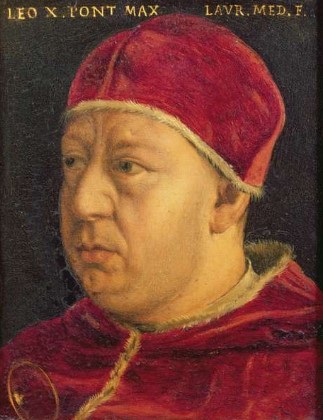
1475 – Pope Leo X (d.1521), born Giovanni di Lorenzo de' Medici, was the Pope from 1513 to his death in 1521. He was the last non-priest (only a deacon) to be elected Pope. He is known for granting indulgences for those who donated to reconstruct St. Peter's Basilica and his challenging of Martin Luther's 95 Theses. He was the second son of Lorenzo de' Medici, the most famous ruler of the Florentine Republic, and Clarice Orsini. His cousin, Giulio di Giuliano de' Medici, would later succeed him as Pope Clement VII (1523-34).
Several modern historians have concluded that Leo was homosexual. Contemporary tracts and accounts such as that of Francesco Guicciardini have been found to allude to active same-sex relations - alleging Count Ludovico Rangone and Galeotto Malatesta were among his lovers.
Cesare Falconi has examined in particular Leo's infatuation with the Venetian noble Marcantonio Flaminio, with Leo arranging the best education that could be offered for the time. Von Pastor has argued, however, against the credibility of these testimonies, and rejected accusations of immorality as anti-papal polemic. Gucciardini was not resident at the papal court during Leo's pontificate, while other contemporaries such as Matteo Herculano took pains to praise his chastity. Paul Strathern, a British writer and academic, argues that Leo, while homosexual, was not sexually active as pope, despite identifying notable members of that family as such.

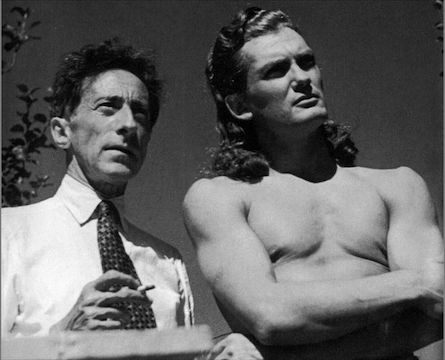
Jean Cocteau and Jean Marais
1913 – Jean Marais, French actor (d.1998); Marais was never much of an actor, and it is doubtful he would have achieved international fame had he not become Jean Cocteau's lover, but he was, by universal acclaim, one of the most handsome men ever to appear in films. In the 1940s when he made most of his movies for Cocteau, actors were still slicking down their hair with Kreml and Vitalis. But he changed all that. His cheveaux fous and athletic good looks created a new style of postwar leading man.

When in 1946 he spent his time in Cocteau's Beauty and the Beast, trapped within an ape-like constume, waiting for Beauty's kiss to turn him once again into Jean Marais, Gay moviegoers around the world secretly wished that they were Josette Day who actually got to kiss the handsome actor's furry face. What is perhaps most interesting about the friendship between Cocteau and Marais is that the actor's face in profile bore an astonishing resemblance to the boys Cocteau had been sketching for thirty years before meeting him.
In the 1960s, he played the famed villain of the Fantômas trilogy. After 1970, Marais's on-screen performances became few and far between, as he preferred concentrating on his stage work. He kept performing on stage until his eighties, also working as a sculptor. In 1985, he was the head of the jury at the 35th Berlin International Film Festival.


1948 – Alvin Baltrop (d.2004) was a gay African-American photographer who earned fame through his photographs of the Hudson River piers during the 1970s and 1980s.
Baltrop was born in 1948 in the Bronx. He discovered his love of photography in junior high school. Baltrop received no formal art education; older photographers from the neighborhood taught him different techniques and how to develop photos himself.
Baltrop enlisted in the Navy as a medic during the Vietnam War and continued taking photos, mainly of his friends in sexually provocative poses. He built his own developing lab in the sick bay, using medic trays for developing trays. After his time in the Navy, Baltrop worked odd jobs as a street vendor, a jewelry designer, a printer, and a cab driver. Because he wanted to spend more time taking photos at the Hudson River piers, he quit his job as a cab driver to become a self-employed mover. He would park his van at the piers for days at a time, living out of his van to take pictures.
From 1975 through 1986, Baltrop took photographs of the West Side piers, where he was a well-known member of the community. Baltrop knew every person he photographed, and people often volunteered to be photographed. Younger boys and men at the piers often confided in him about their sexual orientation, their relationships with their families, their housing status, and their work.
Baltrop captured the gay cruising spots and hookup culture that existed in New York City before the AIDS epidemic. Baltrop's photographs not only captured human personalities, but also the aesthetics of the dilapidated piers. His life work is a snapshot of gay, African-American, and New York City history.
Baltrop struggled to make his way in the art world, facing racism from the white gay art world. Gay curators often rejected his work, accused him of stealing it, or stole his work themselves.

"Three Sailors"
Late during the 1990s, NYC artist John Drury, who knew Alvin from their shared neighborhood - Drury living on Third Street, with his wife and Baltrop on Second Street, in lower Manhattan - befriended the artist and recognized the photographers unique abilities, nominating him for a Louis Comfort Tiffany Foundation Award for the Arts. Alvin Baltrop had few exhibits in his lifetime; his work gaining international fame only after his death.
According to one journalist, Baltrop came out as gay at fourteen years old. Baltrop had long term relationships with men and women, but preferred identifying as gay.
Baltrop was diagnosed with cancer in the 1990s. Impoverished and without health insurance, curators and filmmakers attempted to exploit him for their own financial gain. He died on February 1, 2004

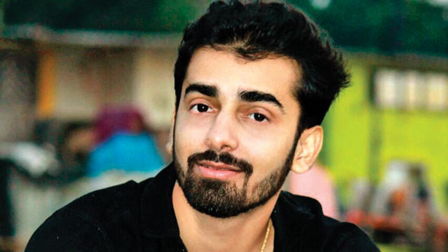
1990 – Nakshatra Bagwe, born in Mumbai, India, is an Indian actor and award winning film maker. Nakshatra will be making his Indian feature film debut in My Son is Gay and is due for his international film debut as the lead actor of Hearts. His films Logging Out, Book of Love, Curtains and PR (Public Relations) represent the current LGBT scenario of India.
He is a LGBT rights activist and also an organiser of Gujarat's first ever pride march. Nakshatra has participated in several Pride Parades in India. He won KASHISH – Mumbai International Queer Film Festival in 2012 for his debut film Logging Out. It was screened at prestigious venues like Queens Museum of Arts (New York), The Old Cinema (London) and it was also a part of Queer India European tour 2012 to raise awareness about LGBT issues in the Indian context.
Nakshatra hails from Konkan coastal region. Masure, Malvan is his native village. He takes part in homosexuality awareness projects. Nakshatra and his mother were featured in a promo of popular Indian television show Satyamev Jayte. He came out to society when he participated in Asia’s first LGBT flashmob. He also participated in second queer flashmob which happened at Dadar station, Mumbai. Nakshatra posed nude for a campaign named 'Breaking Closets'.
In July 2014, He became the brand ambassador of Moovz, a global social network for gay men. Nakshatra is first and only openly Indian LGBT person to be signed up as the brand ambassador by any brand till now.

1998 – The mother of Tyra Hunter (1970 – 1995) is awarded $2.9 million in a wrongful death lawsuit against the city of Washington DC. Hunter, a pre-operative transsexual, died of injuries sustained in a car accident in 1995. Emergency medical technicians at the scene were abusive and withheld treatment, and a doctor at DC General Hospital failed to follow nationally accepted standards of care.


18 notes
·
View notes
Note
Hello! I'm looking for FCs that can fit a character that is tough, gruff and seems like they would only respond in one word sentences. I'm open to any gender and ethnicity, just need some help finding FCs that fit the quiet but tough vibe. thank you in advance!
Eric Bogosian (1953) Armenian.
Emilio Rivera (1961) Mexican.
Michelle Yeoh (1962) Chinese Malaysian.
Benjamin Bratt (1963) Peruvian [Quechua] / White.
Ming Na Wen (1963) Macanese / Malaysian Chinese.
Peter Dinklage (1969) - has achondroplasia.
Park Hee Soon (1970) Korean.
Clemens Schick (1972)
Andrew Lincoln (1973)
Daniel Wu (1974) Hongkonger.
Omar Metwally (1974) Egyptian / Dutch - has spoken up for Palestine!
Ito Hideaki (1975) Japanese.
Pedro Pascal (1975) White Chilean.
Chaske Spencer (1975) Yankton Dakota Sioux, Sisseton-Wahpeton Dakota Sioux, Lakota Sioux Nakoda Sioux, Nez Perce, Cherokee, Muscogee, White.
Nonso Anozie (1978) Igbo Nigerian.
Natasha Lyonne (1979) Ashkenazi Jewish.
JD Pardo (1980) Argentinian / Salvadoran.
Krysten Ritter (1981)
Alberto Guerra (1981) Cuban.
Dichen Lachman (1982) Nepalese Tibetan / German, English, some Scottish.
Riz Ahmed (1982) Pakistani - has spoken up for Palestine!
Brian Tyree Henry (1982) African-American.
Son Suk Ku (1983) Korean.
Cara Gee (1983) Ojibwe
Clayton Cardenas (1984) Mexican, some Filipino.
Asia Kate Dillon (1984) Ashkenazi Jewish / Unspecified - non-binary and pansexual (they/them) - has spoken up for Palestine!
Richard Cabral (1984) Mexican.
Jessica Matten (1985) Red River Metis of Cree and Saulteaux descent, Chinese, White.
Martin Sensmeier (1985) Tlingit, Koyukon, Eyak, White.
Rahul Kohli (1985) Punjabi Indian - has spoken up for Palestine!
Oliver Jackson-Cohen (1986) Egyptian Jewish and Tunisian Jewish / English.
Sonoya Mizuno (1986) Japanese / English, Argentinian.
Monica Raymund (1986) Afro-Domincan / English, Ashkenazi Jewish -is bisexual.
Deepika Padukone (1986) Konkani Indian.
Kyle Gallner (1986)
Kali Reis (1986) Wampanoag, Nipmuc, Cherokee, Cape Verdean - is two-spirit (she/her) and queer.
Michaela Coel (1987) Ghanaian - is aromantic - doesn't have social media but in 2022 she boycotted an Isr*el-sponsored film festival!
Lewis Tan (1987) Chinese Singaporean / Irish, possibly English.
Rob Raco (1989)
Daniel Kaluuya (1989) Ugandan.
David Castañeda (1989) Mexican.
Úrsula Corberó (1989)
JuJu Chan (1989) Hongkonger.
Hannah John-Kamen (1989) Nigerian / Norwegian.
Assad Zaman (1990) Pakistani.
Kiowa Gordon (1990) Hualapai and White - has spoken up for Palestine!
Sarah Kameela Impey (1991) Indo-Guyanese / British.
Kasamatsu Sho (1992) Japanese.
Hari Nef (1992) Ashkenazi Jewish - is a trans woman - has spoken up for Palestine!
Kawennáhere Devery Jacobs (1993) Mohawk - is queer.
Freddy Carter (1993) - has spoken up for Palestine!
Alex Høgh Andersen (1994)
Gabriel Basso (1994)
Ayo Edebiri (1995) Afro Barbadian / Nigerian - is queer.
Ambika Mod (1995) Indian.
Emilio Sakraya (1996) Moroccan / Serbian.
Tati Gabrielle (1996) African-American, 1/4 Korean.
Archie Renaux (1997) Punjabi Indian and British.
Lizeth Selene (1999) Mexican [Unspecified Indigenous, Black, White] - is genderfluid and queer (she/they).
Zoe Terakes (2000) Greek Australian - is trans masc non-binary guy (they/he) - has spoken up for Palestine!
D’Pharaoh Woon-A-Tai (2001) Ojibwe, Cree, Chinese Guyanese, Afro Guyanese, White.
Here you go! If you /tagged/NAME search on my blog you'll find gif packs with the vibes and please let me know if you need more preferably with a specific age rage!
9 notes
·
View notes

